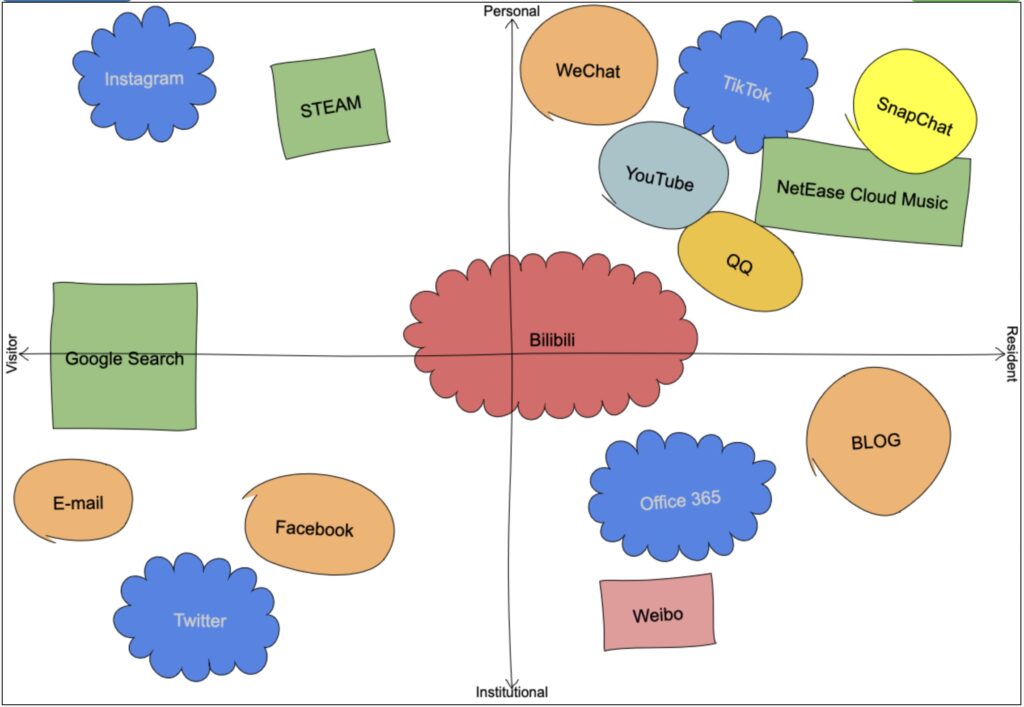My V & R Map:

What digital platforms are students currently using to develop their professional network?
In my opinion, students mostly use LinkedIn and Google Drive to develop professional networks. LinkedIn is a workplace social platform where students register their digital identities, find and learn about future employers, or make some connections. Google Drive is an online cloud storage service that is often used by students when working on group discussions or projects. It allows multiple people to work on documents at the same time, which is very convenient. However, in the last two years, the video conferencing software Zoom has also gained popularity as many students attend online courses, allowing users to communicate and exchange ideas via a variety of mobile devices.
What could the student consider in expanding their professional learning network?
When students build and expand their professional learning network, on the one hand, they should show themselves, so as to make others interested in themselves. On the other hand, students should pay attention to learn to protect their privacy, including personal information, home address, etc., because the leakage of personal privacy may endanger their property and personal safety. In addition, sometimes we need to make some comments on other people’s text. At this time, we need to pay attention to our own language, which should be positive.
How do data privacy and security limit and/or promote a PLN?
In order to ensure the privacy and security of data, many people tend to publish some virtual content or set access permissions, which will make it difficult for them to expand PLN. Because this restricts others’ understanding of them, some opportunities may be missed, such as the choice of future employers.
In your network how can you create a digital identity/reputation?
I tend to share my personal information, educational background, professional field, work experience and my strengths and hobbies. At the same time, I will pay attention to my personal privacy and try not to post content about my real life.
How did pivots to work-from-home during the COVID-19 pandemic change how we should consider our social media connectivity and professional balance?
During the COVID-19 pandemic, people work form home and spend more time on social media. Professional learning network on social media become one off the mainstreams. The teaching method has been changed from face-to-face teaching to an online class format. Employees and students can benefit from non-commuting and comfortable clothing without having to get up early to catch the morning bus to clock in to work or arrive on time to class. But working from home has its drawbacks, as the comfort of home can make it challenging to draw the line between work and life for a while.
Leave a Reply